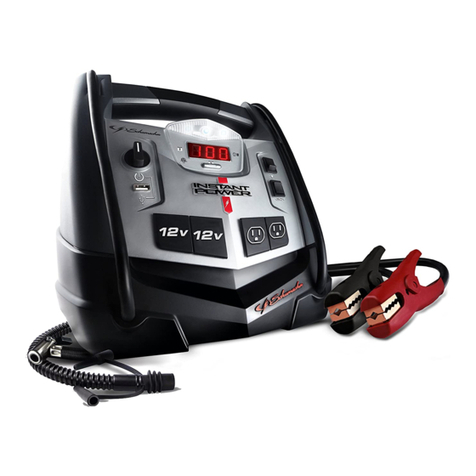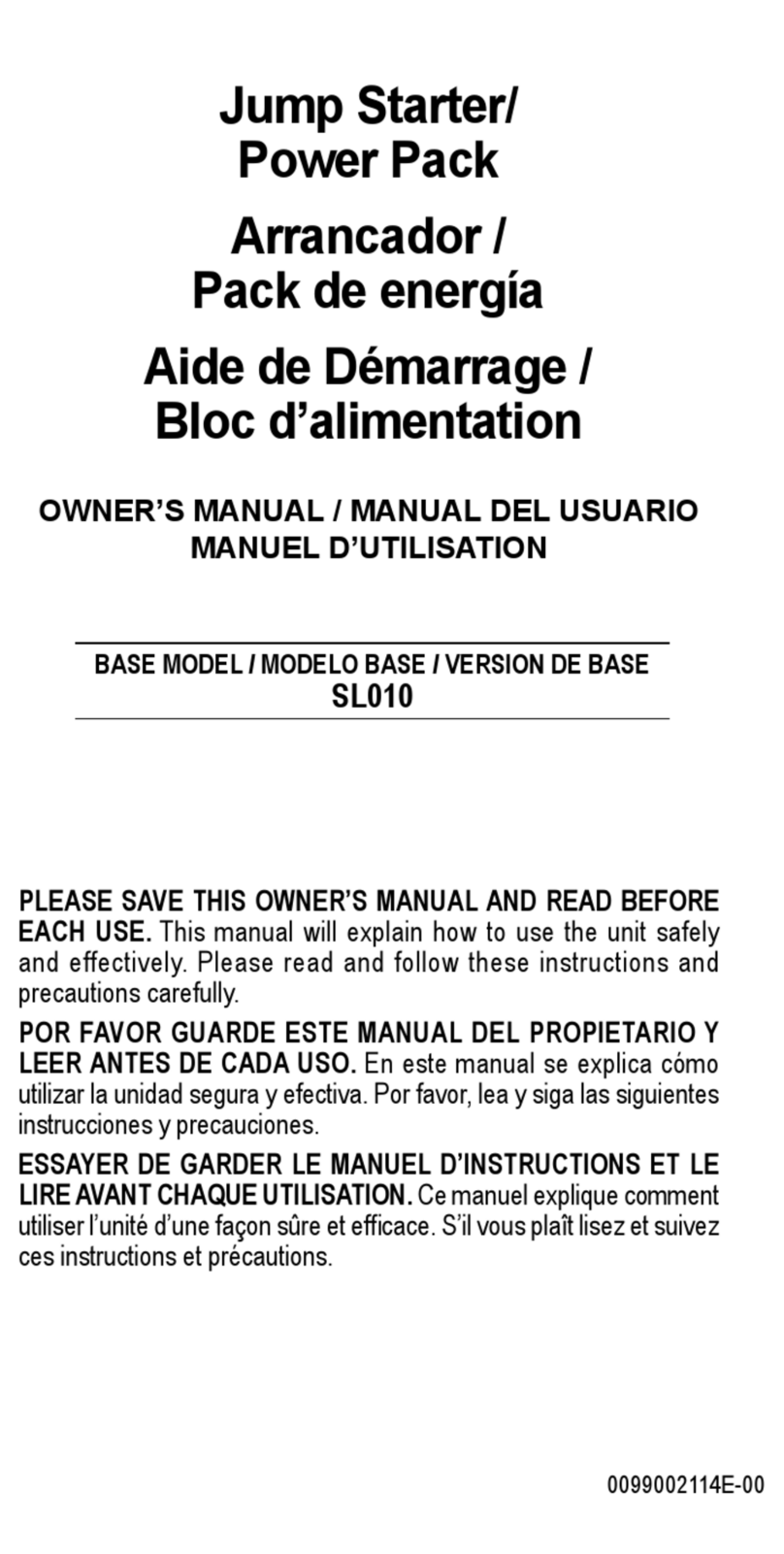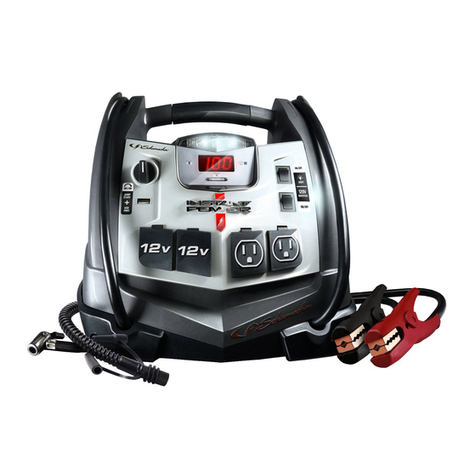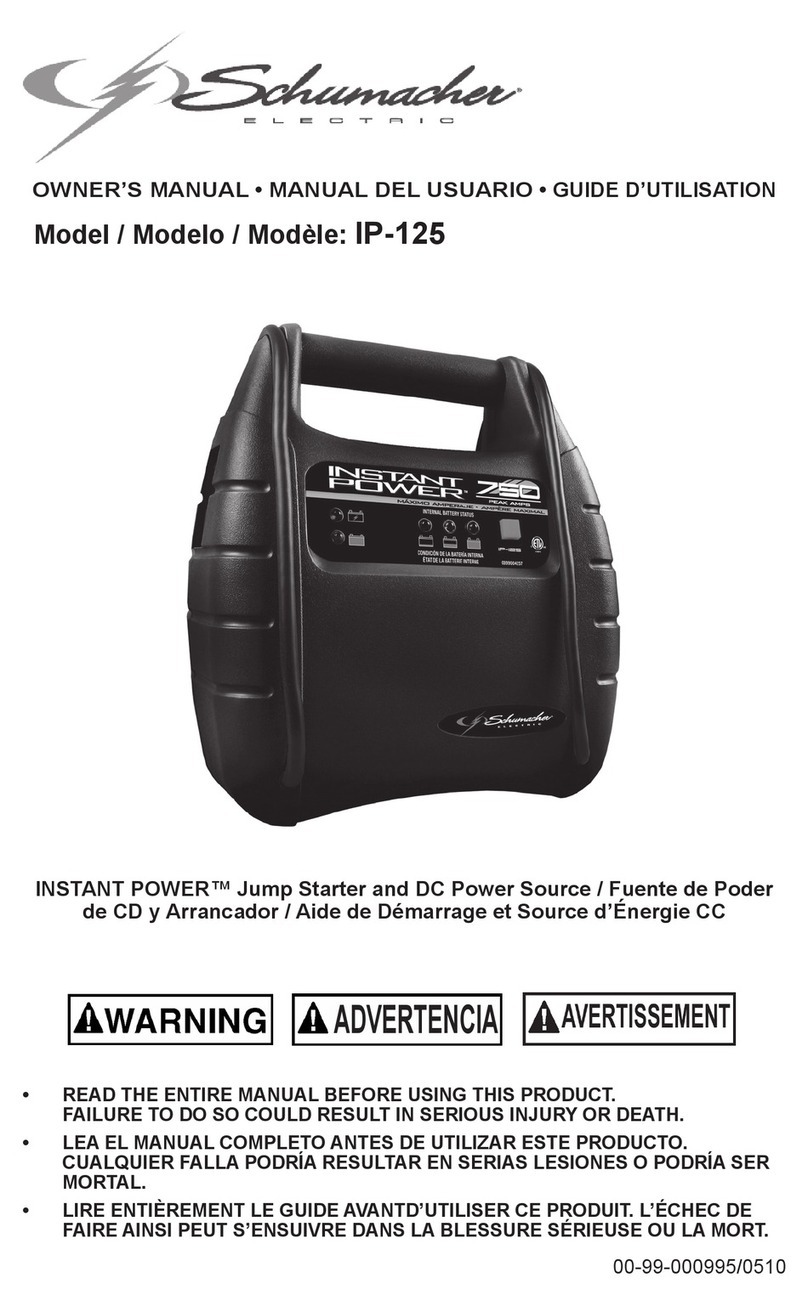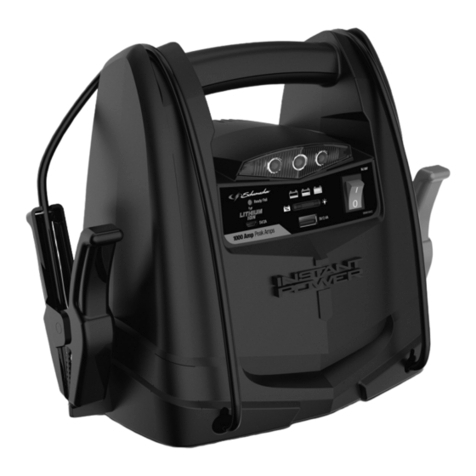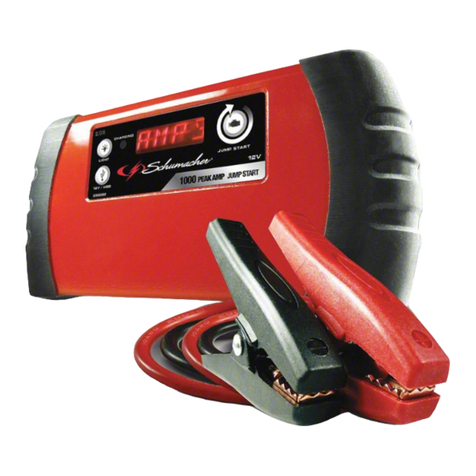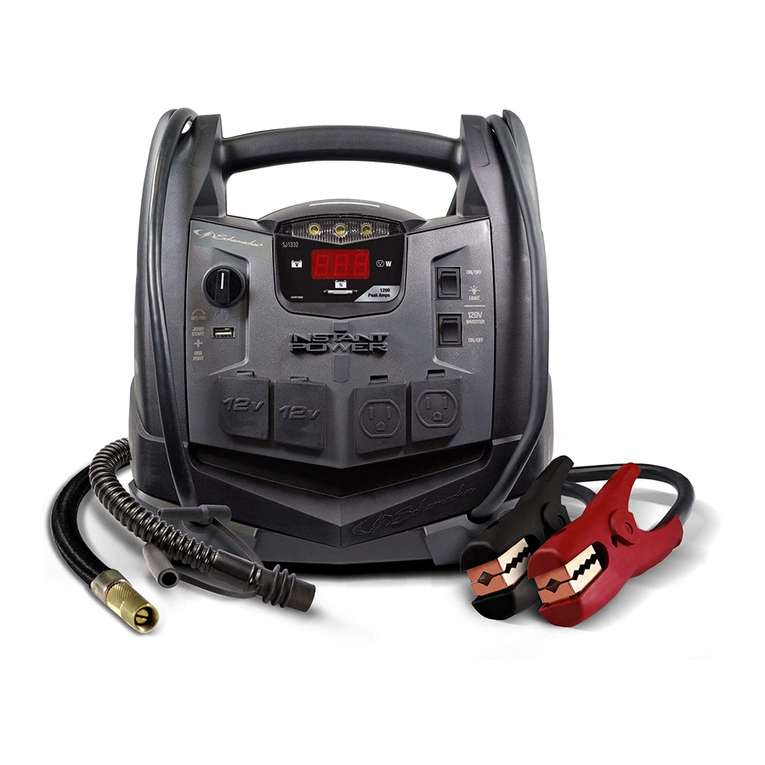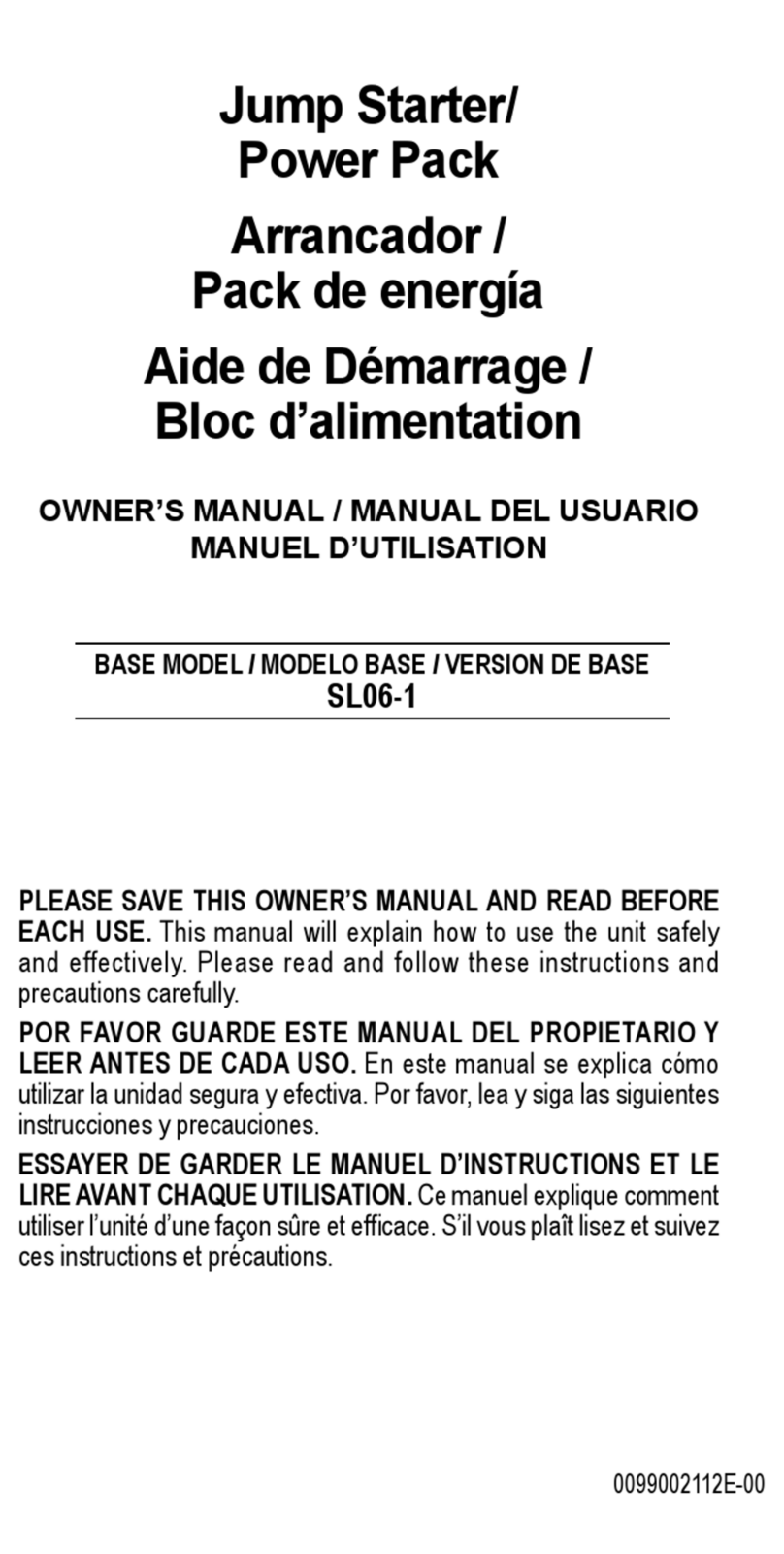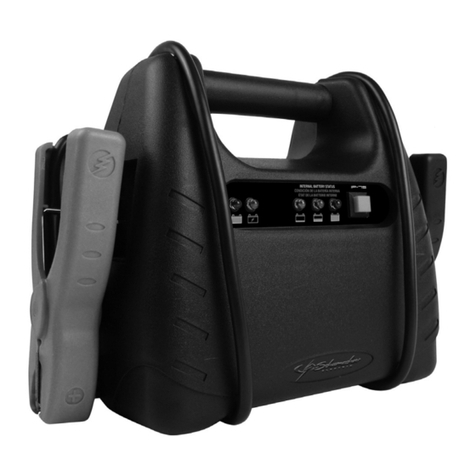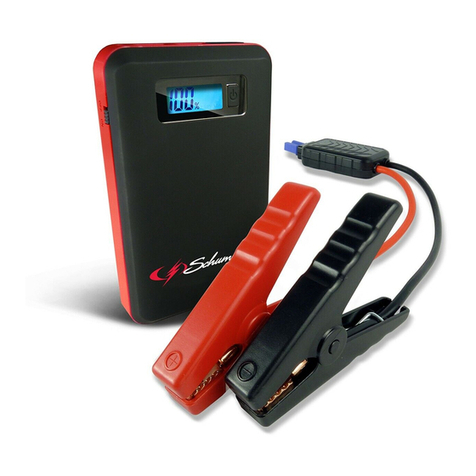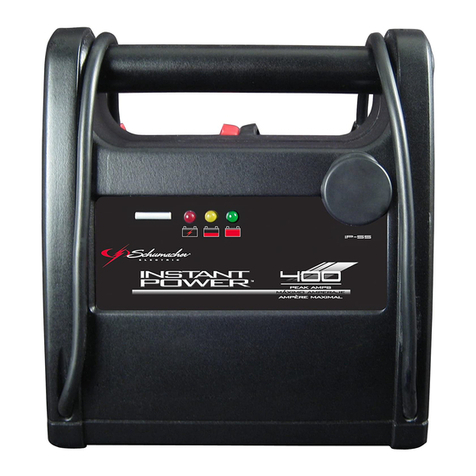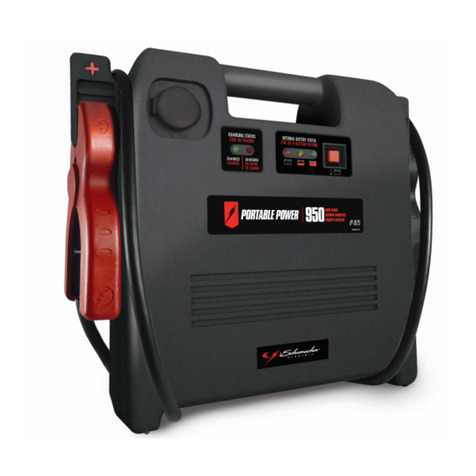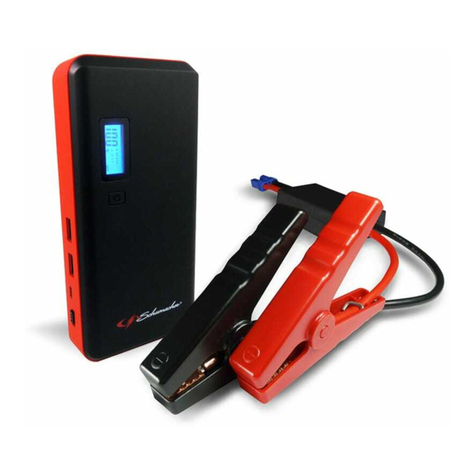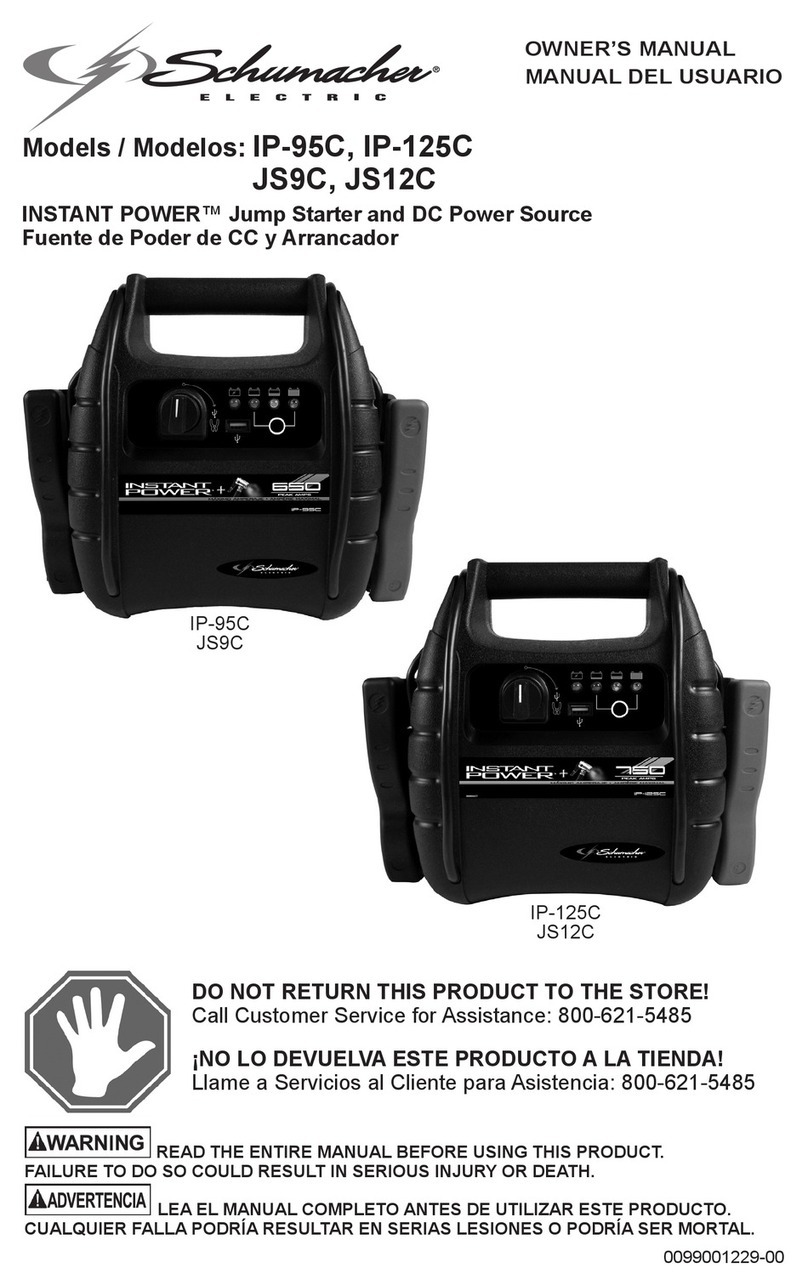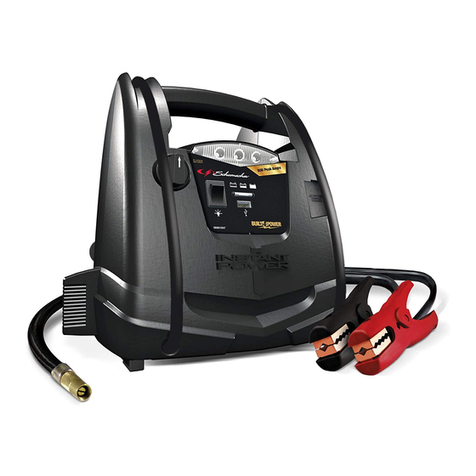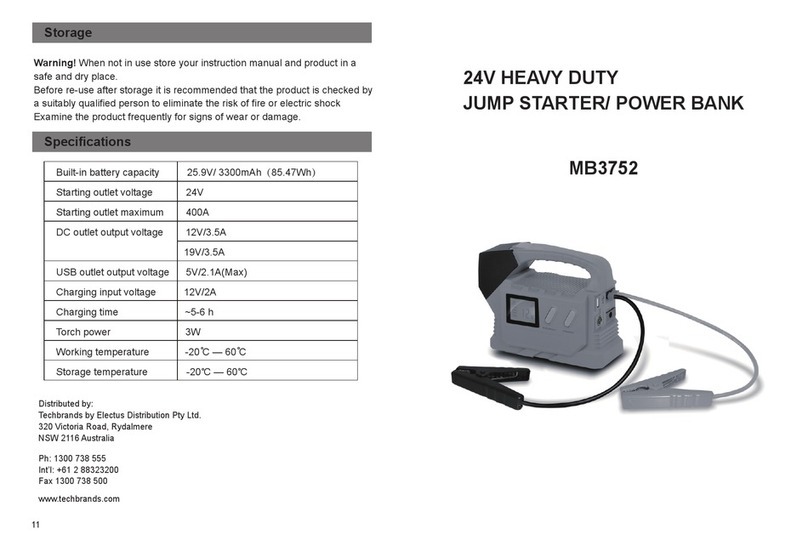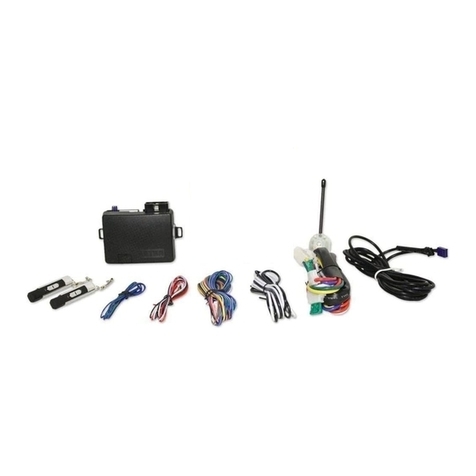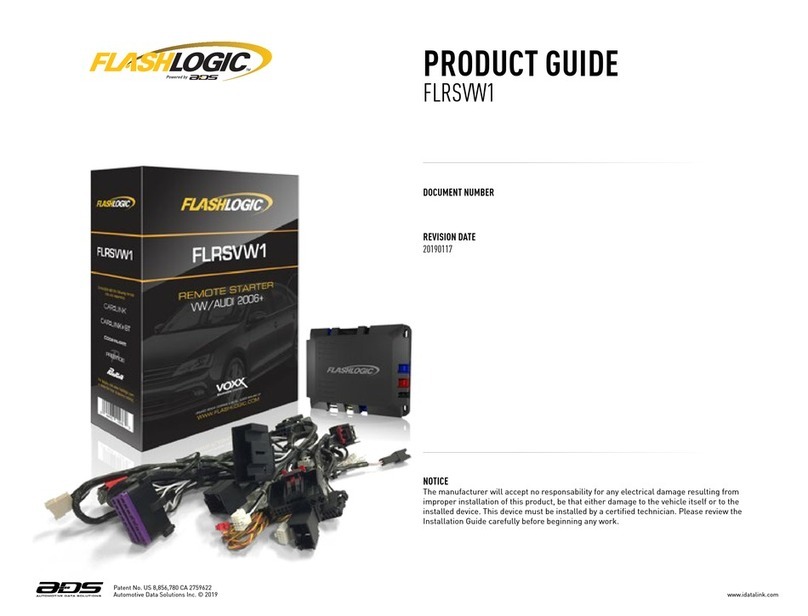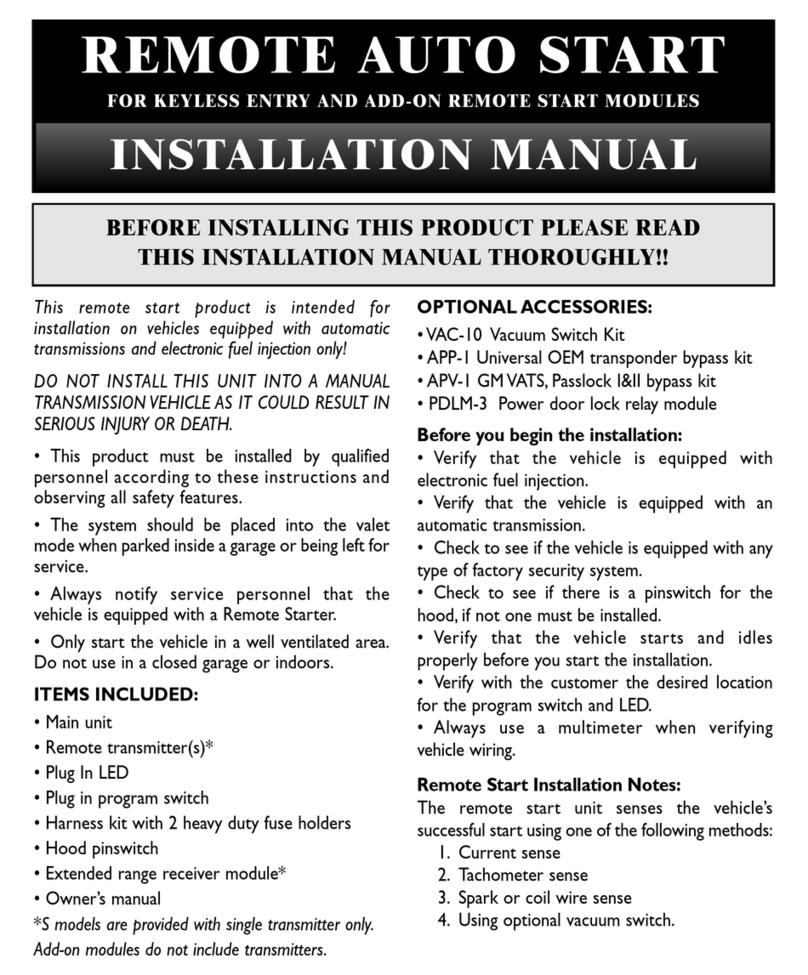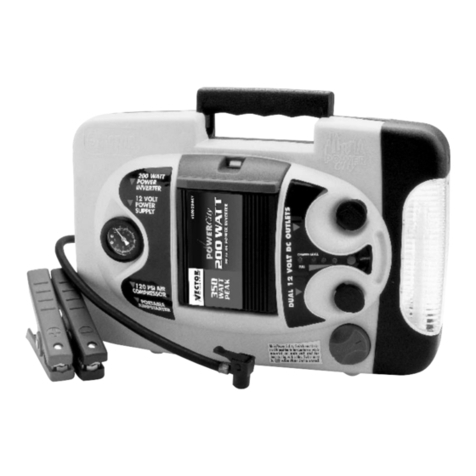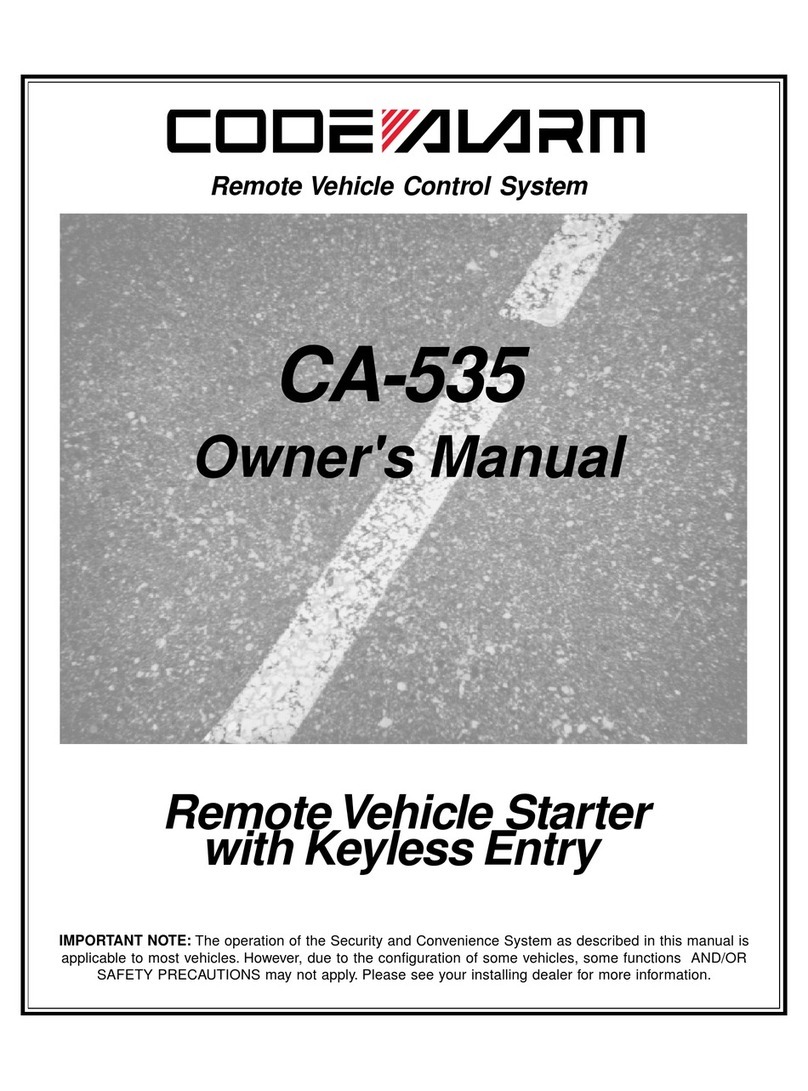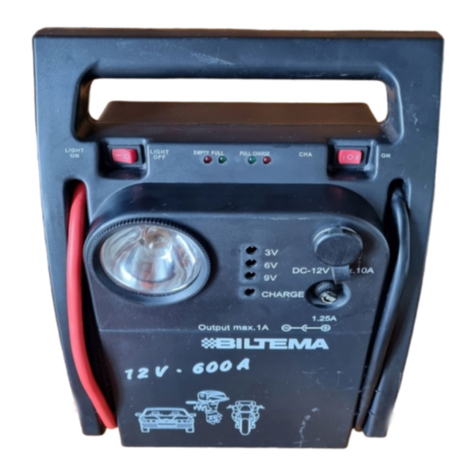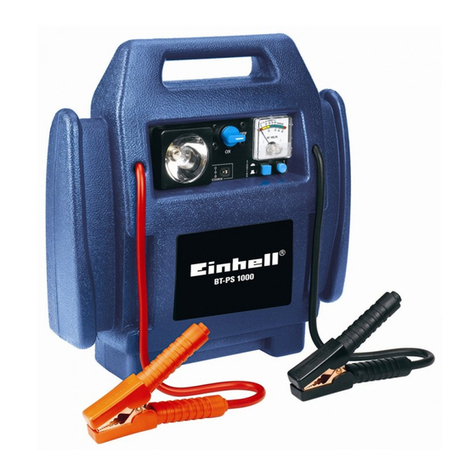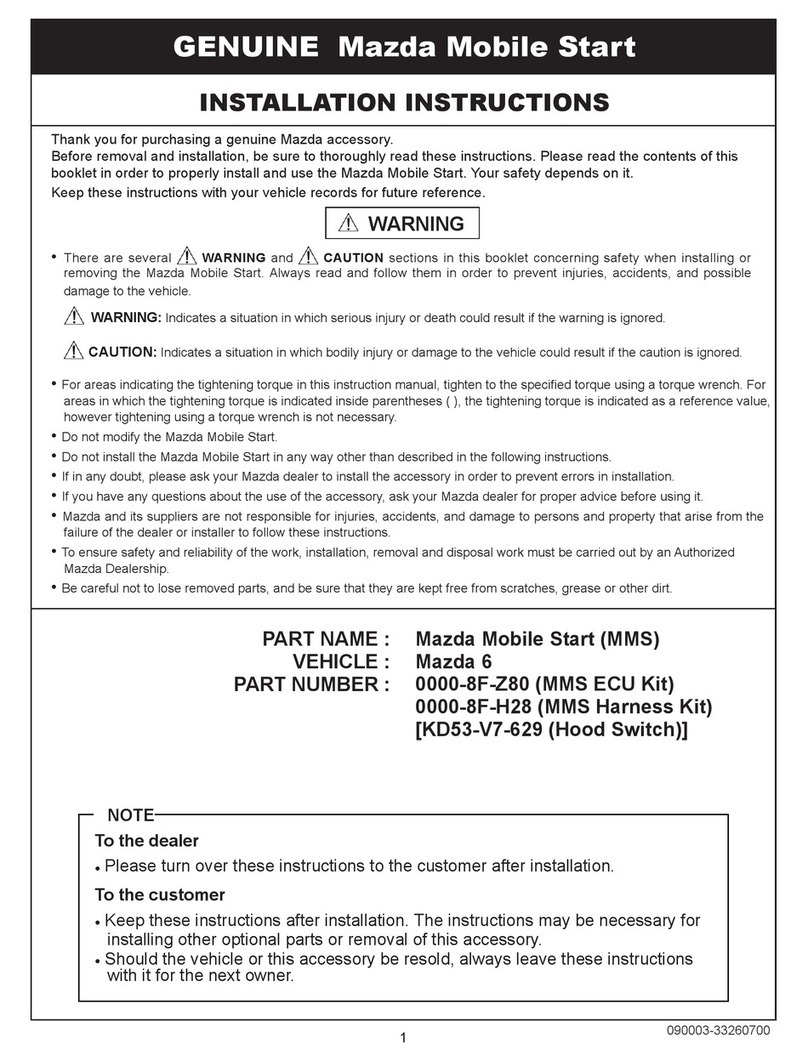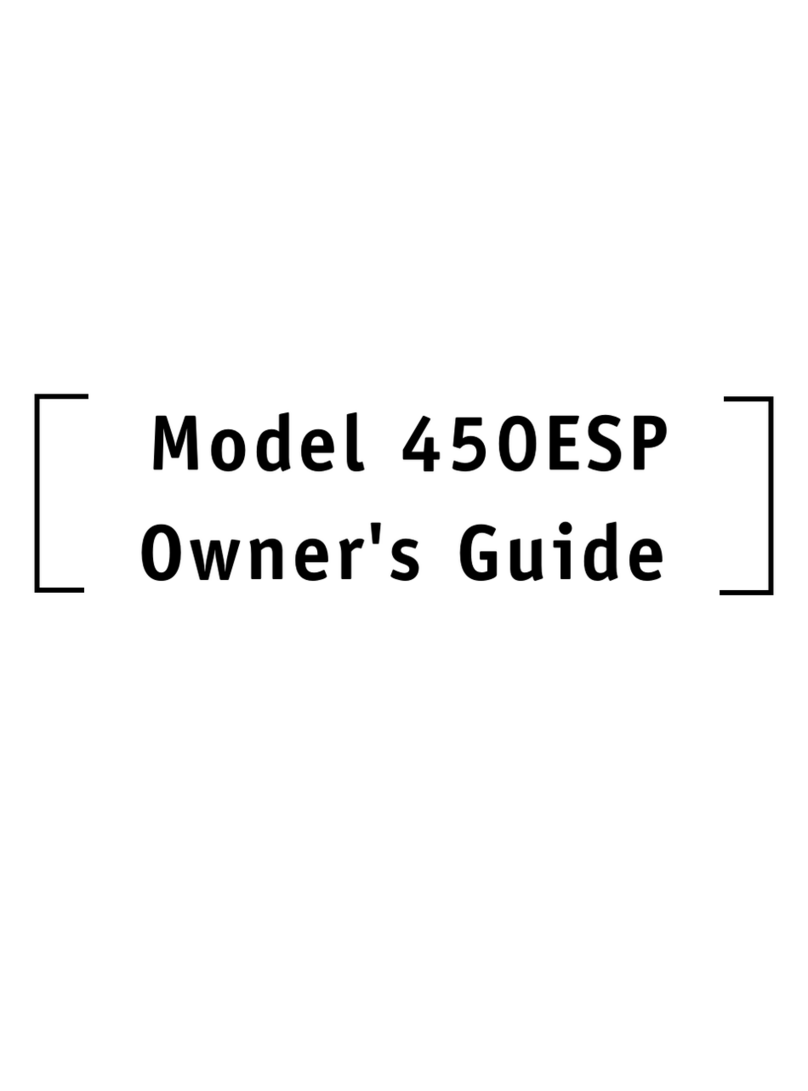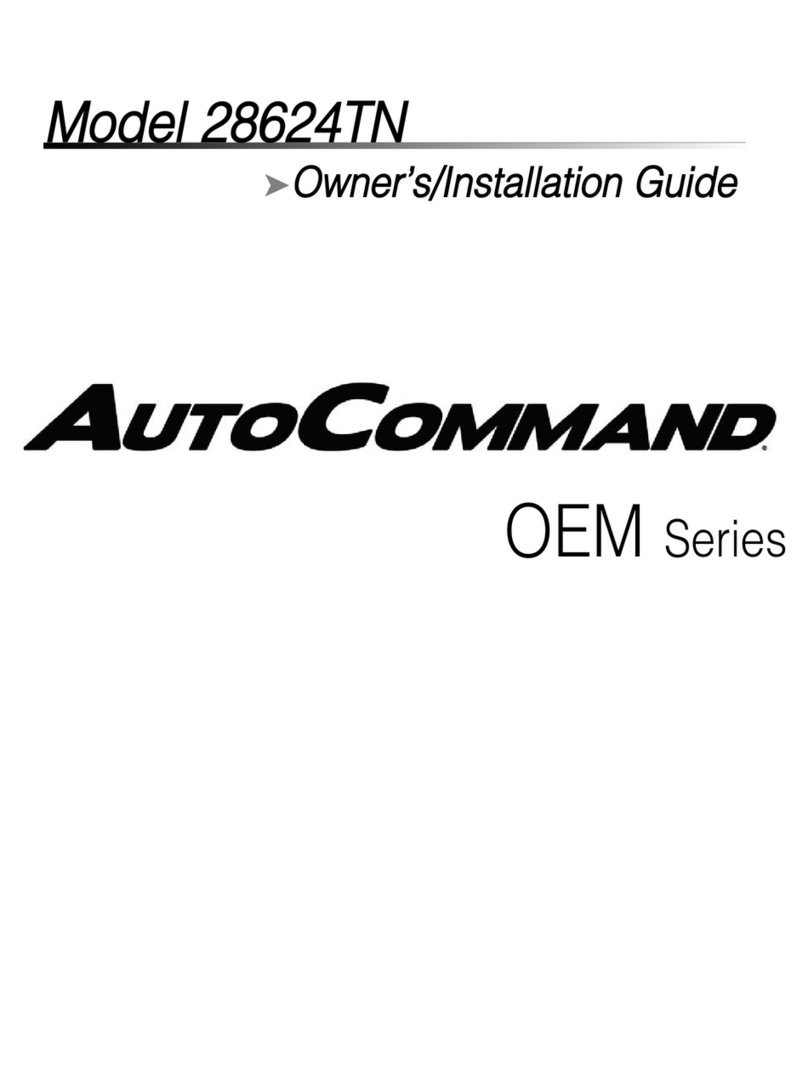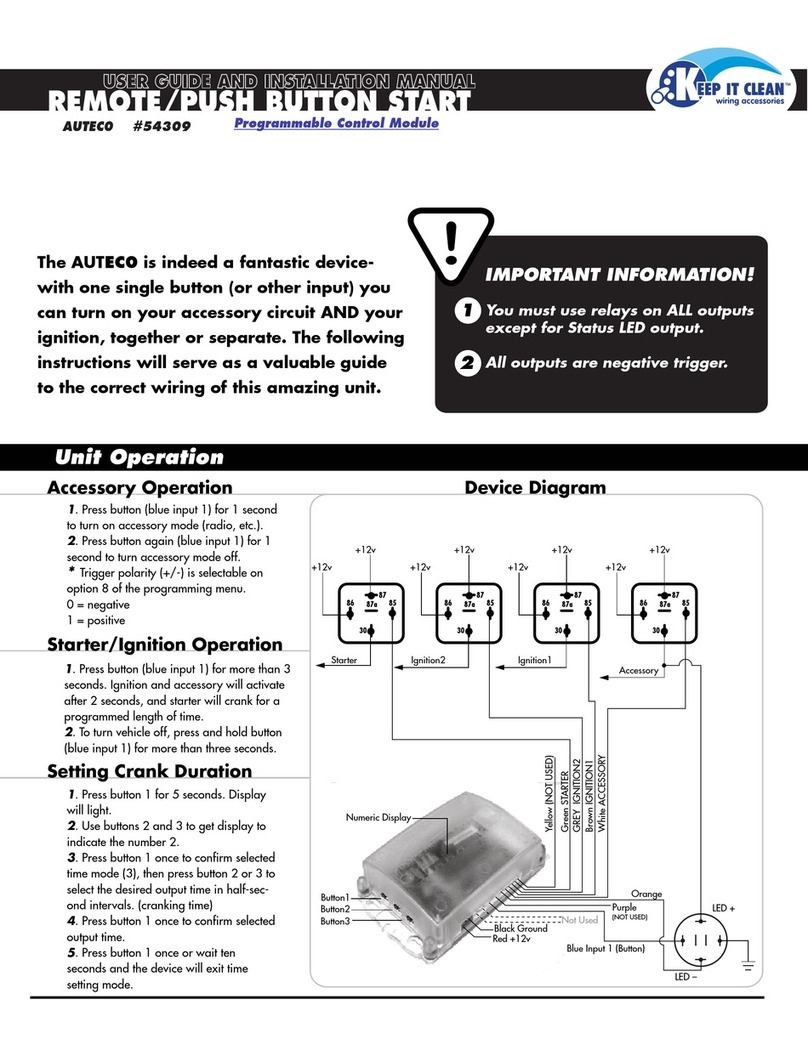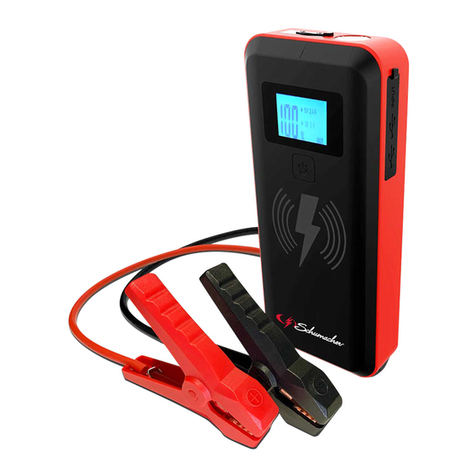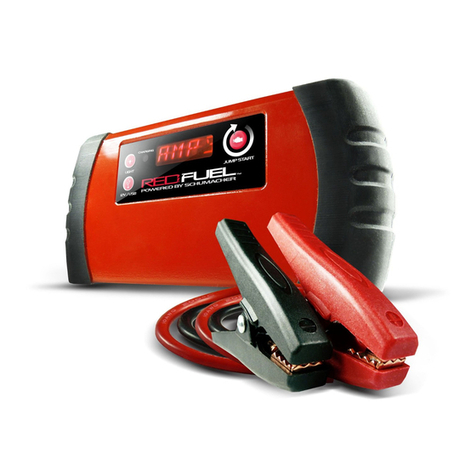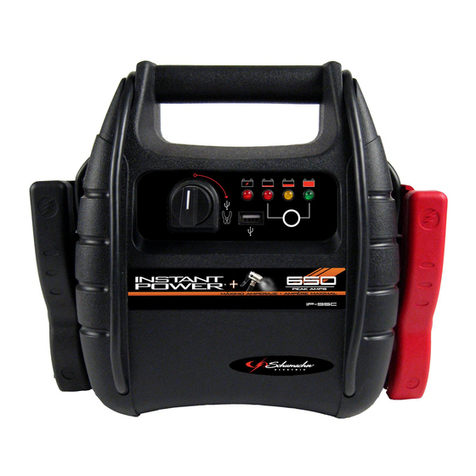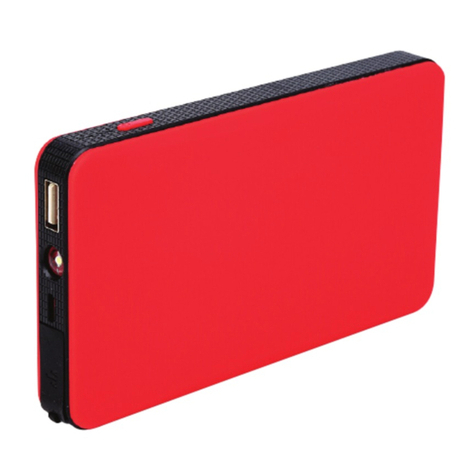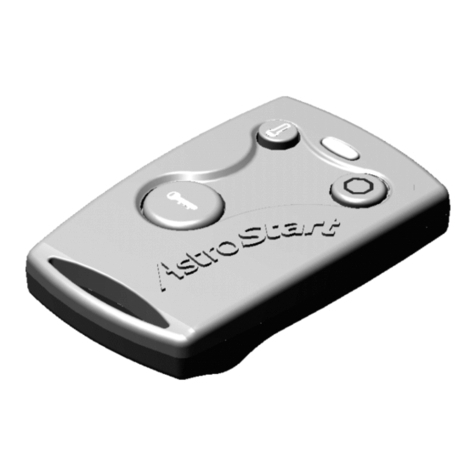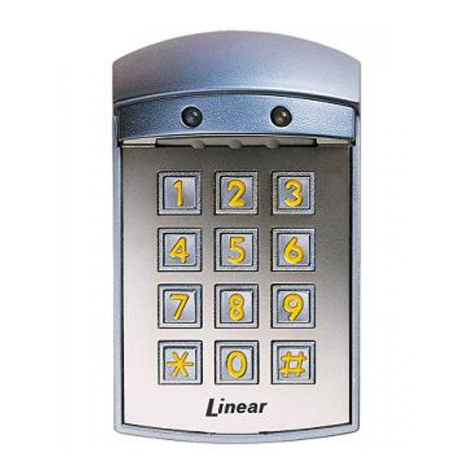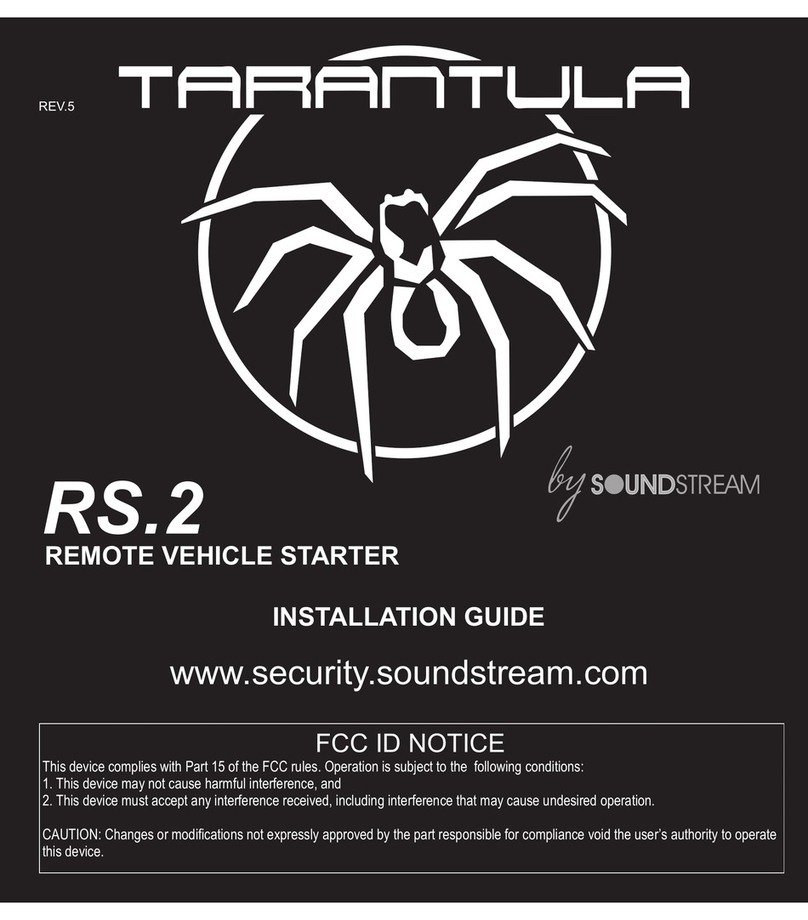•5•
7.4 LED Indicators:
To check the internal battery’s charge
status, press the Battery Status button on
the front of the Instant Power.
The LED lights will indicate the charge
level as follows:
• A red LED indicates a 50% or less
charge and you should immediately
recharge the Instant Power™.
• A yellow/orange LED indicates a 50
to 75% charge. The Instant Power may be
used but should be recharged as soon as
possible.
• A green LED indicates the internal
battery is fully charged.
• The CHARGING (red) LED indicates
the Instant Power is charging (connected
to an AC power source.) At full charge, the
CHARGED (green) LED will light.
7.5 Charging the Internal Battery using the
Built-In Charger:
1. To charge, plug an 18 gauge (AWG)
[0.82 mm2] or larger extension cord
into the charger plug on the side of
the Instant Power. (Extension cord
not included; must be purchased
separately.)
2. Plug the extension cord into a 120V
AC electrical wall outlet.
3. The CHARGING (red) LED will
glow indicating charging.
4. The CHARGED (green) LED will
light when the battery has reached
full charge. This could take up to 72
hours, depending on the age and
condition of the battery. The charger
will automatically go into maintain
mode and maintain the battery at full
charge without damaging it.
5. Charge the Instant Power as soon as
possible after use.
NOTE: To reduce the risk of damage to
the electric plug or cord, pull by the plug
rather than the cord when disconnecting
the Instant Power.
You may also charge the internal battery
while driving, using the male-to-male
charger cable (p/n 94500109 – not
included). Insert one end of the accessory
cable into the 12V DC power outlet and
the other end into the vehicle’s accessory
outlet (lighter socket). Completely
disconnect the charger cable when the
engine is not running.
IMPORTANT! The CHARGING
(red) LED and the CHARGE (green)
LED do not operate during this method of
charging. Using this method to charge the
battery overrides the maintain mode and
the battery can be overcharged. Monitor
the progress of the battery and when it
reaches a full (100%) charge, disconnect
the charger. Do not leave the battery
unattended or it could explode causing
property damage or personal injury.
8. OPERATING INSTRUCTIONS
8.1 Jump Starting a Vehicle Engine
WARNING! A SPARK NEAR THE
BATTERY MAY CAUSE A BATTERY
EXPLOSION. TO REDUCE THE RISK
OF A SPARK NEAR THE BATTERY:
IMPORTANT: Do not use the Instant
Power while charging the internal battery.
1. Turn the vehicle’s ignition OFF before
making cable connections.
2. Position the DC cables to reduce the
risk of damage by the hood, door and
moving or hot engine parts. NOTE:
If it is necessary to close the hood
during the jump starting process,
ensure that the hood does not touch
the battery clips or cut the insulation of
the cables.
3. Stay clear of fan blades, belts, pulleys
and other parts that can cause injury.
4. Check the polarity of the battery posts.
The POSITIVE (POS, P, +) battery
post usually has a larger diameter
than the NEGATIVE (NEG, N, -) post.
5. Determine which post of the battery is
grounded (connected) to the chassis.
If the negative post is grounded to the
chassis (as in most vehicles), see step
6. If the positive post is grounded to
the chassis, see step 7.
6. For a negative-grounded vehicle,
connect the POSITIVE (RED)
clip from the Instant Power to the
POSITIVE (POS, P, +) ungrounded
post of the battery. Connect the
NEGATIVE (BLACK) clip to the
vehicle chassis or engine block away
from the battery. Do not connect the
clip to the carburetor, fuel lines or
sheet-metal body parts. Connect to a
heavy gauge metal part of the frame
or engine block.
7. For a positive-grounded vehicle,
connect the NEGATIVE (BLACK)
clip from the Instant Power to the
NEGATIVE (NEG, N, -) ungrounded
post of the battery. Connect the
POSITIVE (RED) clip to the vehicle
